Lifestyle - Interview

Interview with Advertising Photographers Marco Grizelj and Kristian Krän
Lifestyle - Interview
by Melisa Kaya
Although it is thought that it is necessary to have the same characteristics for a successful business partnership, having complementary skills is the secret of a long-term and successful cooperation. AORTA is an example that proves this. Marco Grizelj and Kristian Krän have different skills as photographers, but walking to the same vision and target together since 1996. I talked with Marco Grizelj and Kristian Krän about their careers, AORTA, and advertising photography.
Marco & Kristian, before talking about photography, could you tell us about yourselves?
MARCO: I was born in Sweden in 1972. My parents came from Croatia and settled in the city of Jönköping in 1968. They worked in a factory that made paper. Every summer we went to Croatia where my parents were building a house. When I was 18 I moved to Stockholm. There I studied film science and had my first assignments as a photographer. After 5 years in Stockholm, I was accepted to the Photography education at the Gothenburg University where I studied for 3 years and finished with a BFA degree in photography. After my photography studies, I have worked uninterruptedly as a photographer together with Kristian under the name AORTA.
KRISTIAN: I was born in Sweden in a small town called Linköping in 1973, my father was a painter in Guadeloupe and my mother worked as a language teacher. From the age of 7 to 18, I went to the Rudolf Steiner school in Gothenburg where there was a big focus on artistic subjects such as painting, music, and sculpture.
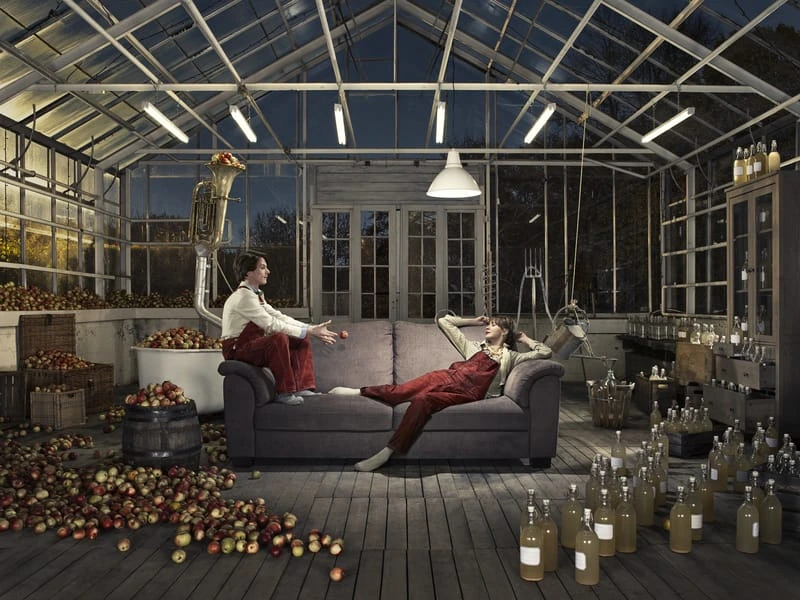
IKEA ORANGERI - Photo by Marco Grizelj and Kristian Krän
When did you get your first cameras, and how did you decide to pursue a career in photography?
MARCO: When I was around 14 I started to frequently visit a shop that sold magazines from around the world. I was fascinated by the photographs, they offered a glimpse of the world outside the small Swedish city I lived in. This was before the internet. The magazines were a kind of escapism for me. I bought my first camera when I was 16. There was a darkroom in my school. I was fascinated when I realized how I could shape images of the environment I lived in and make it look like something else, something more mysterious and untouchable. I loved it and wanted to pursue it as a career.
KRISTIAN: I got my first camera when I was seventeen. At that time they had a black and white darkroom in school where the students could develop their films and do their prints. I was amazed about how you could capture moments and transform them into your own fantasy worlds by using light and stage situations. From that moment I never let go of photography, started out with documentary work but slowly moved more and more towards staged photography.
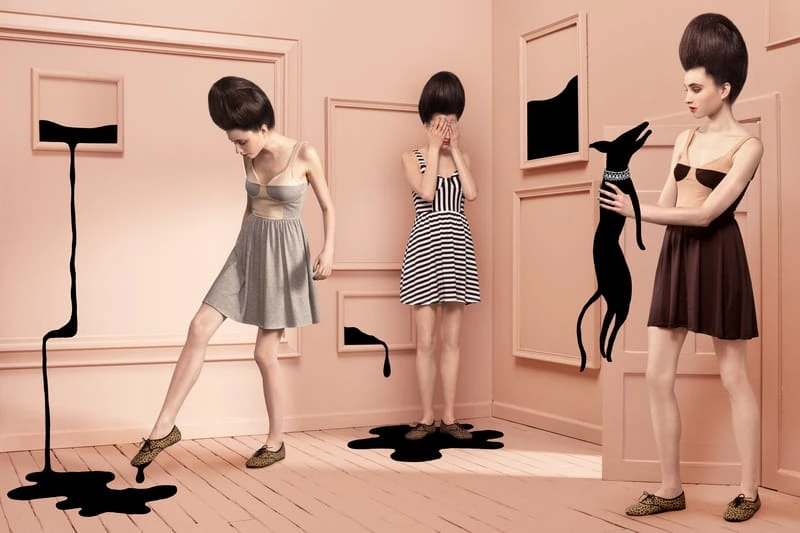
MONKI4 - Photo by Marco Grizelj and Kristian Krän
When did you meet? and How did you decide to establish AORTA?
MARCO: We met during my years in Stockholm. Early in the morning in a cafe. We were the only ones there, on opposite sides of the room. We were both assembling our applications for the photography education in Gothenburg. Kristian came over to me and asked if I was also into photography and we started talking and became friends. A couple of months later we were studying in the same class in Gothenburg. After a year we realized we had a lot in common in our photography and decided to cooperate. Neither one of us liked the idea of working solo in photography. AORTA was born.
KRISTIAN: We met in Stockholm when I was working as an assistant to the Swedish documentary photographer Anders Petersen. At that time I had no friends in Stockholm and lived for my work. At this lonely time, I saw Marco with a camera and some prints in a cafe and something made me go over and approach him. It turned out that we were applying to the same photography education in Gothenburg.
What are the advantages of being two photographers in one studio?
MARCO: There are many. It makes us more efficient in many ways. For example, while one of us is shooting, the other can finetune the lighting. This is very important for our style of photography. We almost always shoot tethered (connected to a computer) so while one of us is shooting, the other sees the images coming in and sees what works and what can be improved. We take turns behind the camera and build upon, improve, each other's direction. On assignments being two allows one of us to shoot while the other can communicate with the client around the computer and bring that feedback quickly into the direction. Being two also means that lows and highs of events are shared. There is a saying…shared joy is double joy, shared pain is half pain ;-)
KRISTIAN: We find it very useful to be two photographers since while one is taking pictures the other can work as an assistant, modulate the light, talk to the art director, stylists, set builder etc. It also gives you the time to reflect on how to proceed with the picture and take it to the next level.
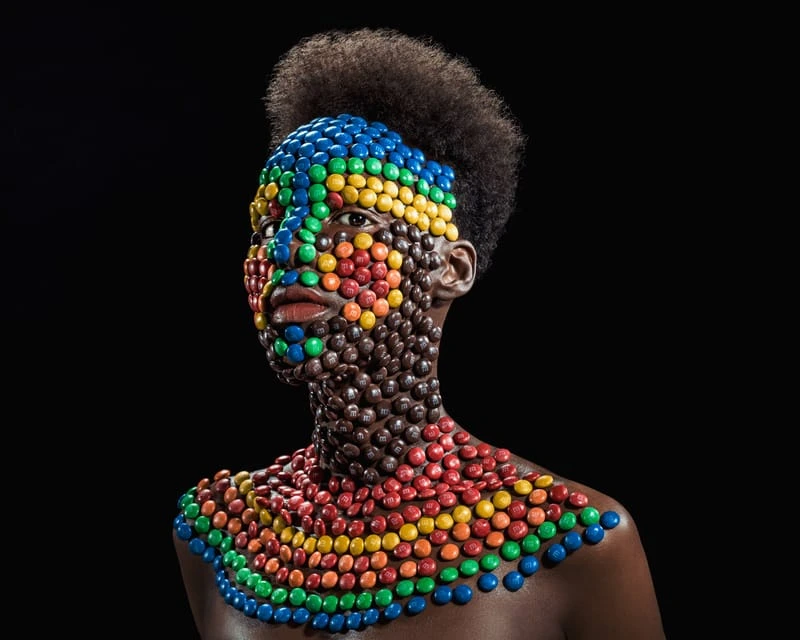
M&M SHUKRI - Photo by Marco Grizelj and Kristian Krän
What are your photographic approaches? What are your differences?
MARCO: We mostly work with staged photography. It means that our starting point is an idea turned into a drawing which is then turned into a photograph. Everything that is seen in the photograph needs to be carefully selected to support the original concept. In a way, it´s like a painting. Regarding our differences, I would say that I am slightly more interested in the technical aspects of photography while Kristian is more into the “human” aspects such as expressions and anatomy.
KRISTIAN: Its hard to say but I am more of a wild ideas person who comes up with new ways of dealing with problems while Marco is a bit more down to earth, structure, organizing and technical.
You have worked on projects with different concepts. What kind of projects do you prefer to work on?
MARCO: We love exploring different aesthetical concepts but we particularly love when we feel like we are creating a world of our own. When we create a character as well as set design.
KRISTIAN: One of our favorite subjects are portraits and staged photography because it allows you to create your own creative worlds, stage situations that could occur or just existed before in your own mind.
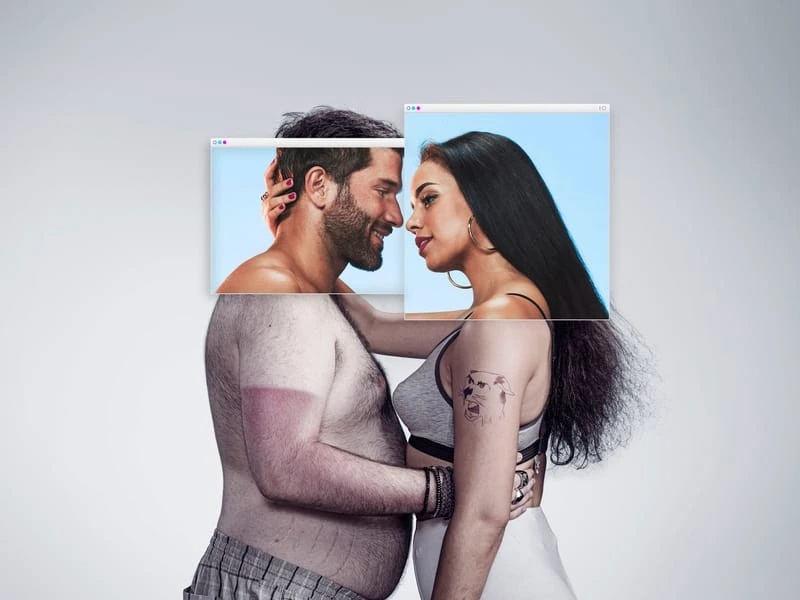
Circle Kiss - Photo by Marco Grizelj and Kristian Krän
What was the first commercial product that you photographed? If you were shooting the same photo right now, would the result be very different?
MARCO: It was a job in Germany for a washing powder. We photographed models lying in a bed surrounded by crisp white beddings. It was almost like a cliché of advertising photography. I think it would look pretty much the same today.
KRISTIAN: Our first photo assignment was strangely enough for Ariel washing powder.A picture of a woman in a white bed. At that time we were shooting on film so already there it is a big difference in execution from how we would do today but the result would probably look similar.
How did your interest in advertising photography begin? What is the most special aspect of reflecting dreams for you?
MARCO: My interest in advertising photography is a kind of natural spinoff from my interest in creating visual worlds and exploring aesthetical concepts.
KRISTIAN: When we were studying photography we went to a lecture with the Swedish filmmaker Roy Anderson who inspired us by saying that he financed some of his projects by doing advertising. This approach was new to us and made us think that it´s a quite clean way to make a living using our skills that allows you to do other artistic images with total creative freedom.
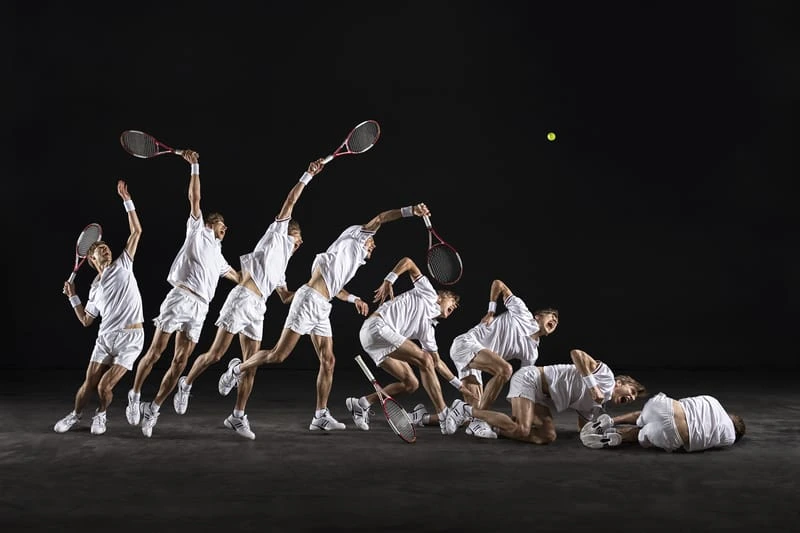
Apoteket Tennis - Photo by Marco Grizelj and Kristian Krän
With your action photos, you are creating more impressive photos. What is the aim? What kind of brands prefer these type of works?
MARCO: These are mostly called cinemagraphs. Screens are everywhere these days and open up possibilities like this. Sometimes a photograph is too still and a movie too long, that´s when these moving stills play a role. Moving images grab attention, particularly in social media flows. These days it is very common that a stills assignment also includes a motion component to be used in a social media campaign.
What are the key points that you pay attention to most before accepting a new project?
MARCO: Are the expectations in line with the budget? Is the timing realistic? Are our skills in line with what needs to be done.
In your projects, do you work in a previously defined concept or are you creating your own concept?
MARCO: In our own projects and some editorial work we create our own concepts. In advertising work, the concept has been predefined by the advertising agency through many meetings with their client. Our job is to interpret that concept and turn their drawing into a photograph that correlates with their intentions.
KRISTIAN: In our own personal projects it usually starts with a theme that we want to explore, then we start to do research - watching movies, reading books and looking at similar pictures that painters or other creatives have done on the theme. Then we start to develop a moodboard, drawing sketches of the scenes we want to portray, make a budget and set a timeline for production.
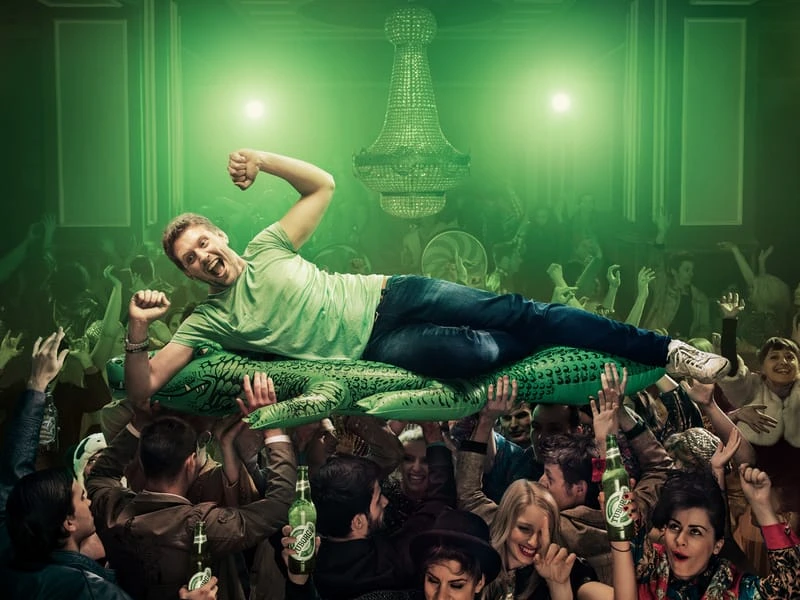
TUBORG Crowd - Photo by Marco Grizelj and Kristian Krän
What do you think about the effect of a good photograph in the buyer's decision?
MARCO: It is very substantial. But good photography needs to be used consistently by brands to be really efficient.
KRISTIAN: Today when we are overwhelmed with pictures it´s actually more important than ever to stand out. To choose a photographer who has a personal style does a big difference.
What is the most important component of a spectacular advertising photograph?
MARCO: Making people stop and notice it. We are completely bombarded by imagery today. A spectacular advertising photograph needs to break through the clutter. This can be achieved in many ways depending on the context, culture, and brand - there is no easy recipe. It is very subtle and sometimes takes some courage from the client but the reward is high.
KRISTIAN: For us, it is about creating an image that grabs attention fast. To sculpture the subject with interesting light and communicate the message of the ad as fast as possible. We also like when not everything in the image is too obvious, to leave some questions in the image for the viewer to decode. Like if there is a child in the image there might also be an object on the floor telling a parallel story of what happened just before the picture was taken.
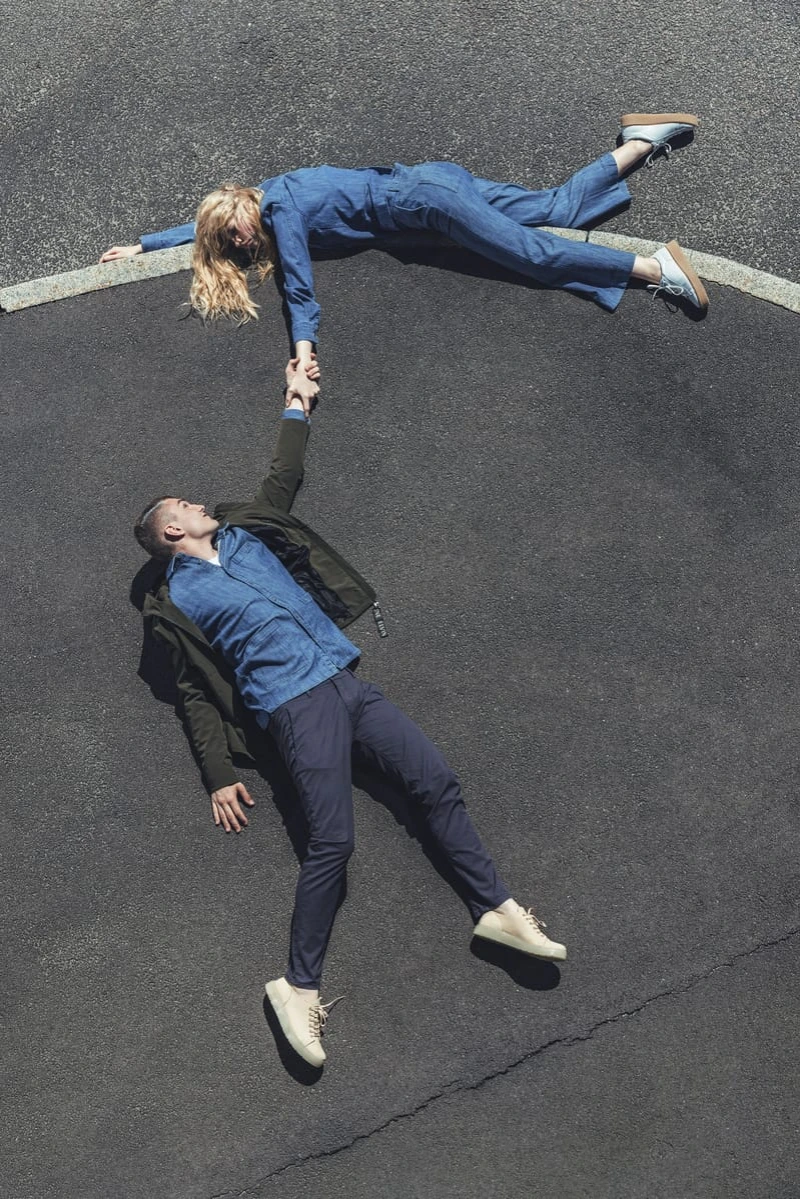
DUO - Photo by Marco Grizelj and Kristian Krän
What type of services do you offer to your clients?
MARCO: Visual concept consultation, photography and postproduction.
KRISTIAN: We offer a full service of going through the campaign concept, looking on how to realize the pictures in the best way possible together with the art director - slimming the costs if possible, choosing the right team, casting and location. We also do postproduction to ensure that the client gets our final touch on the pictures in the end.
Is it possible for abroad clients to work with you for their products' photo shots?
MARCO: Absolutely, we work all over the world. For all practical arrangements that need to be made locally, we work with local production companies if the assignment requires it.
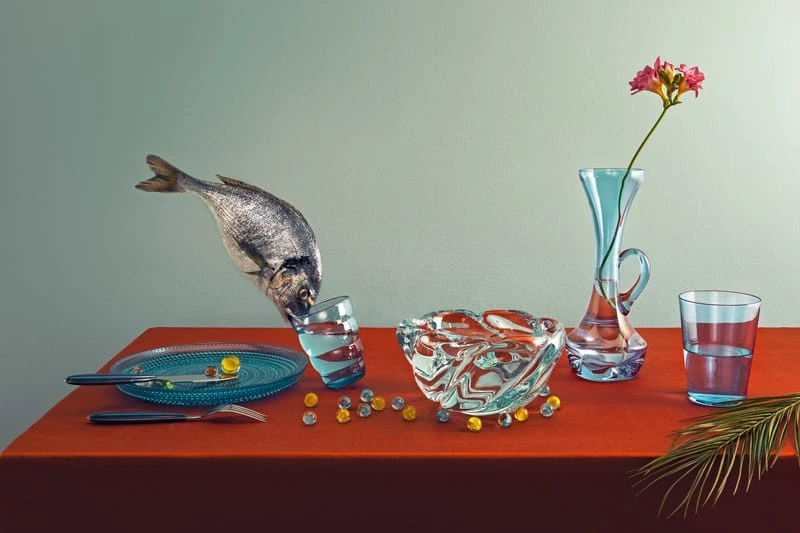
Fish - Photo by Marco Grizelj and Kristian Krän
Business owners want to solve their problems with the lowest possible costs. Despite this, could you explain to them that why they have to work with a professional photographer for a satisfactory result?
MARCO: It´s not always easy to predict what will require a high budget for someone with little experience in producing images. Sometimes there are very cost-effective solutions and we have become experts in finding them. Just as an example, to shoot models on an outdoor location in a busy area in a city can be complicated and expensive. Shutting off a street and going there with a big crew can require a high budget. But this can in many cases be done in another way. The location can be photographed quickly by a small crew without shutting it off and the models can be photographed separately in a studio and added to the location in postproduction. There are many examples like this. By working with a professional photographer you not only hire a person with a consistent visual style, you also hire a person with skills in realizing a concept in the most effective way.
Which factors determine the project budget?
MARCO: Photography deals with reality. Expensive locations, many models and a big crew will make a project expensive. To record something which is happening by itself is much cheaper. To make something happen, to arrange it, takes more time and effort.
What are your expectations from your clients for a successful collaboration?
MARCO: That they are aware of their brand's identity and have a plan on how they wish to work with that.
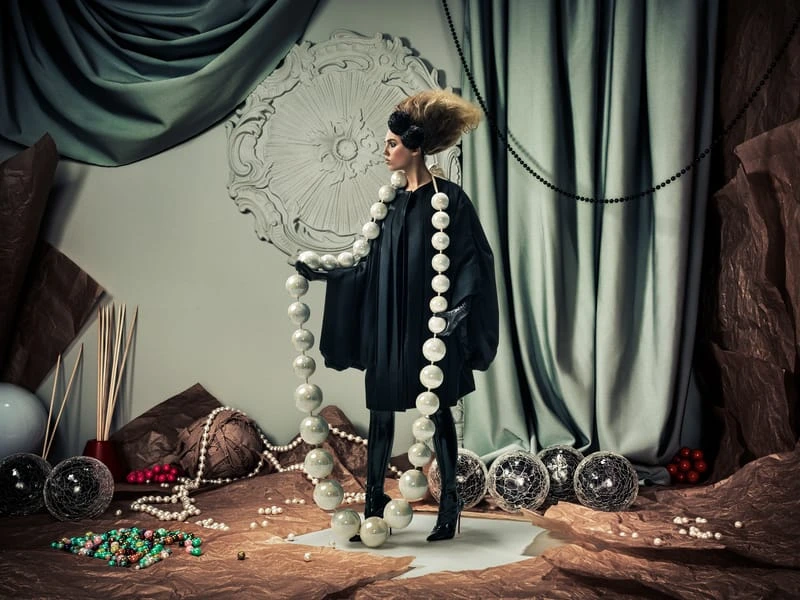
PLAYSPACE - Photo by Marco Grizelj and Kristian Krän
How do you protect the rights of your photographs in this online era?
MARCO: It is almost impossible but most if not all of our clients are very honest about usage.
Could your clients use the photographs in any publication, catalog, website, ad or other platforms in the future?
MARCO: Yes, if this is what is initially agreed. The most common is that the client wants to use the images in certain areas for a certain period. If they wish to extend this period they contact us and we make an agreement for extended usage rights.
What advice would you give to photographers who want to pursue a career in advertising photography?
MARCO: In a way, it is the best time ever but also the toughest time ever to get into this field of work. It is good that with very little and cheap equipment it´s possible to create very high-quality images. Showing your work to the world is easier than ever. But this also means that the competition is higher than ever. Having your own voice and vision is crucial and having marketing skills have become essential.
KRISTIAN: Study other photographers that you admire. Analyze their images, what is it that you like? The light? The subject? The environment? The expressions? Don´t put all your eggs in one basket. Maybe have several agents, work with an image bank, learn how to film, sell prints, work on direct connections with companies. Develop a personal style that makes you unique and stands out and does personal work that shows your artistic style and put much effort into advertising yourself.
What is your favorite photograph that you have ever taken?
MARCO: I really like an image we made of a woman smoking by a window. It has a contemplative and aesthetical quality that appeals to me. It also makes you wonder what the situation is. The white paper very subtly implies something.
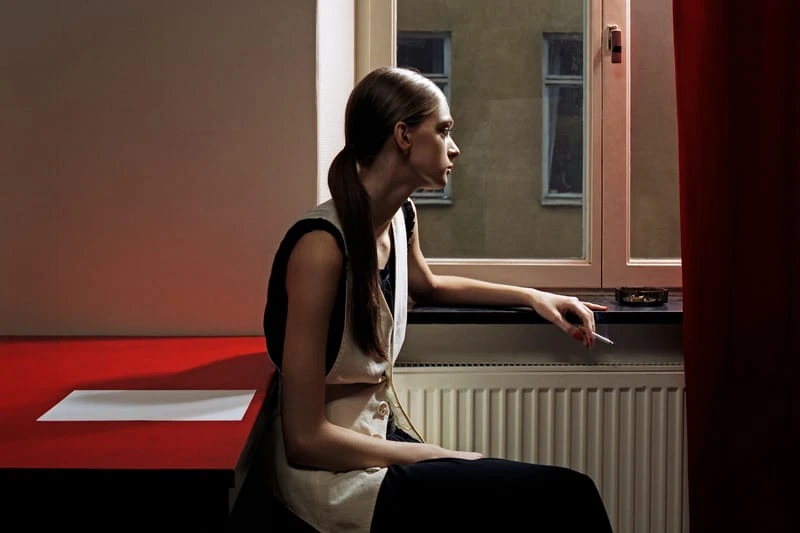
Smoking - Photo by Marco Grizelj and Kristian Krän
KRISTIAN: One of our favorite pictures is a woman sitting by the window at night smoking. She has a quiet moment of reflection and on the red table is a white paper that makes you wonder what she might intend to write.
What do you think about social media? How can our readers follow you?
MARCO: It has positive and negative aspects. It allows everyone to put their work in front of the eyes of the world. But it can take too much time from serious work that demands focus and concentration. Sometimes I get the impression that creative people who are overly active on social media don´t have that much work. The busy ones focus on getting their work done. That said, I realize the importance of social media and having a presence but personally don´t like to spend too much time on it. We are on Instagram under the name @aorta_photo.
What is next?
MARCO: We are doing the stills campaign for an American company in cooperation with their TVC production in Stockholm.
Thank you Marco and Kristian for your time.
For more information, please click here to visit the website of Marco Grizelj and Kristian Krän
This interview was conducted in a Question-and-Answer format. The answers were checked for grammar and punctuation and published without any additional editing. Tuesday, January 22, 2019. All photos are the property of their respective owners.